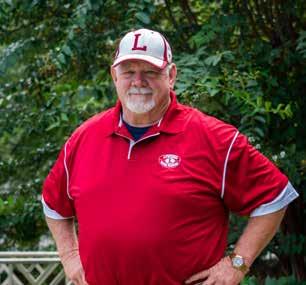
16 minute read
Viking Voice Owes Life to Former Wildcat
Written by: Phil Jones | Photography by: Brandon Pham
On any given Friday night during the South Georgia high school football season, as you tune around listening to your favorite high school football team’s broadcast on the radio, chances are you’ve heard the booming voice of Wes James coming through your radio.
James has been part of the Lowndes Vikings radio broadcast team, the Viking Voice, for 18 years, calling Viking home and away games during that time. James loves the Vikings and loves to be behind the microphone, so he’s been right at home in the press box on Friday nights.
Last fall, James called his final game for his beloved Vikings, deciding to call it quits. While Vikings fans surely hate to see him go, at least he got to do it on his own terms, rather than be forced to step away, which is exactly what almost happened to James on two different occasions with health scares.
The first came in the spring of 2000. James woke up one morning hurting with mild stomach pain, and as the day went on, the pain grew worse. Finally, he decided to visit his family doctor, who, after examining him, sent James to Dr. David Parker. At the time, James thought he would be examined, get a prescription, and be on his way home. James found out quickly that would not be the case.
“I asked Dr. Parker how long my exam would take,” James said. “That’s when he gave me the news: three days.”
Parker wanted to do extensive tests to determine the cause of James’ problem. Those tests revealed that James had diverticulitis, a painful inflammation of the digestive tract. James was given a course of antibiotics and pain medication in hopes of clearing up the affliction.
After six weeks, however, his condition
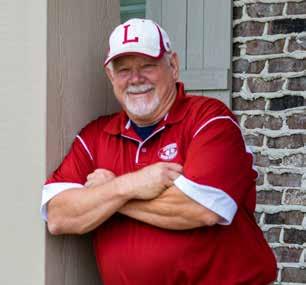
had not improved, and he underwent surgery. Dr. Parker performed the operation, removing a portion of diseased tissue from James' colon.
James was able to return to normal activities after the surgery, and everything was fine. It appeared the surgery had corrected the problems in his abdomen. He had no pain, and life was good.
Then, in September of 2011, he began having stomach pains once again; only this time, the pain was accompanied with a serious problem: James noticed blood in his stool. Thinking (and hoping) the problem would go away, Wes went about his day,until later that night, when things weren’t getting any better. That’s when he called 911.
EMTs transported James to South Georgia Medical Center, where a series of tests revealed the problem. An artery was leaking blood into his colon. While James was
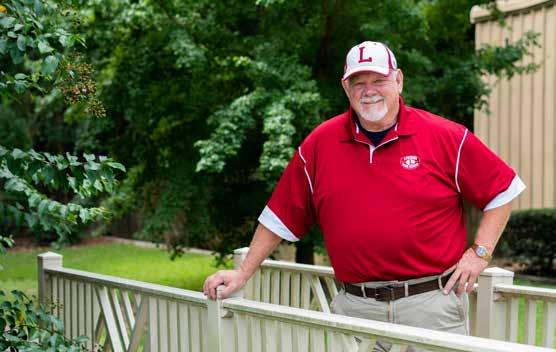
waiting to be taken into surgery, the artery ruptured. It was then a race against the clock as he was losing massive amounts of blood.
“I was given 17 units of blood before I went into surgery,” James said. “I was told later by the doctor that he didn’t know if I was going to make it if they didn’t operate right away”.
The doctor that James was referring to, and the surgeon who would perform the surgery, just happened to be the same person who had operated on him 11 years earlier. Parker was once again called on to go in and fix the problem, but time was running out. Even with the blood transfusion, it was critical that Parker find and correct the problem. Fortunately for James, Parker did just that, and the legendary voice of the Vikings is grateful that the former Valdosta Wildcat just happened to be available once again.
“I owe Dr. Parker my life,” James said.
Speaking of Wildcats and Vikings, the Winnersvile Classic game that year was coming up, but James was still recovering from major surgery, which took 54 staples to close. However, following the operation and a two-week stay in the hospital, he was determined to be on the call, and indeed he was.
After slowly climbing the stairs of Martin Stadium’s massive home side leading up to the pressbox, James settled into his customary spot behind the microphone, and with the words, “Good evening, Vikings Fans,” Wes James was back.
Although COVID-19 cases are steadily increasing, you can still dine in at restaurants, go to shopping plazas, and go to the gym. We haven’t had a lockdown in months, but there are some who are still uncomfortable leaving their homes unless they absolutely have to, and rightfully so. When you think of the gym, you may be nervous to go because of sanitary reasons (even though there are wipe down stations). If you are one of those individuals, have no fear because you can still have a productive workout in the comfort of your own home.
What if I don’t have any Equipment?
If there’s one thing I’ve learned since the beginning of this crisis, it's that we spend money on things we don’t really need. There's no need to go to the store and buy items when there are substitutions already in your home. “I need a yoga or exercise mat.”
What you really need is just something to lay or sit on while you do your exercises. Have you ever thought about using a towel or a bed sheet? It works just as good as any yoga mat.
A great substitution for dumbbells can be anything with weight. My recommendation if you want heavy weight is to use gallon-sized jugs (like milk jugs) filled with water. For less weight, use canned goods, books, or small water bottles.
If you enjoy a more intense workout, try running around the neighborhood with a backpack filled with heavy items inside.
It’s all in the mind. You can work out anywhere and have the same effect of working out in the gym. If you want a change of scenery, then try exercising outside on your porch or in your garage.
Workout Playlist
SICKO MODE by Travis Scott
Mask Off by Future
Savage by Megan Thee Stallion
Welcome to the Jungle by Guns N’ Roses
Good as Hell by Lizzo
Push It by Salt-N-Pepa
Radioactive by Imagine Dragons
Eye of the Tiger by Survivor
Survivor by Destiny’s Child
Stronger by Kanye West
What workouts can I do?
You can never go wrong with these exercises! All can be done without a machine.
Without Weights
Jumping Jacks Burpees Push Ups Sit Ups
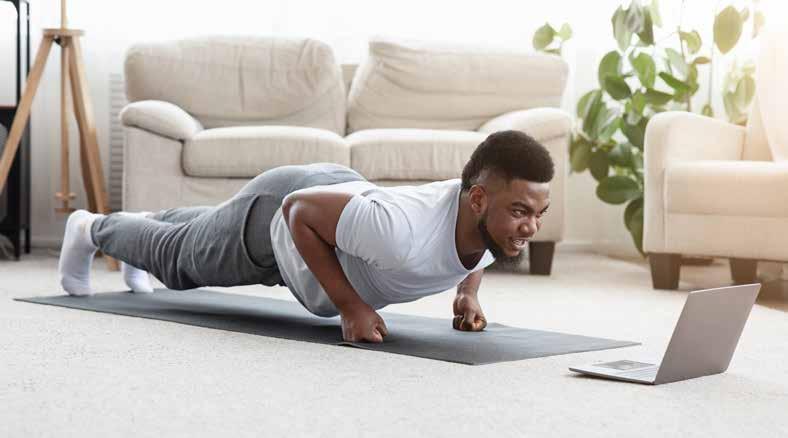
Another thing I’ve seen to be extremely beneficial working out from home is working out along with a video. If you’re like me, I would rather have a workout partner to keep me motivated, but I end up by myself the majority of the time. What do I do? I get my smart television and turn on different workout videos on Youtube. There are channels for just about every workout you can think of.
Hip Hop Fitness: If you enjoy working out and dancing to hip hop, then the Hip Hop Fitness Youtube channel is the perfect one for you. It’s hosted by fitness guru and choreographer Mike Peele. His videos are beginner friendly and are the perfect mix of dancing and fitness. His videos vary depending on what area you want to work out the most. It’s fun, entertaining, and gives you a chance to show your sexy side. To top it all off, Peele always ends with a word of encouragement toward the end of his videos.
POPSUGAR Fitness: This Youtube channel is great because it’s in a group setting and has a person demonstrating the modified version while the rest of the group is going full speed. They have several hosts on the channel, but one of the main hosts is fitness instructor Deja Riley. All videos are 30 minutes long or shorter, so they're perfect to do right before work or even on your lunch break.
Yoga With Adriene: If you would rather enjoy a more peaceful workout, then yoga would best fit you. Hosted by Adriene Mishler, this channel helps you learn the proper yoga poses. Other related videos she includes are focused on mind and body personal development.
These are just some of the many exercise videos you can enjoy while working out. Just remember to have fun. Working out doesn’t have to be a dreadful thing to do.
With Weights
Bicep Curls Tricep Extension Floor Presses Lunges
Down, But Not Out
Written by: Phil Jones | Photography by: Brandon Pham
Like so many young boys growing up in Thomasville, Georgia, Nick Herndon loved sports. But while most of his friends played multiple sports, he was focused on just baseball.
“I loved to play other sports with my friends, but as far as playing organized sports in the leagues around Thomasville, I always wanted to play baseball,” he said.
Herndon said that while his parents (Joey and Frances Herndon) supported him, there was no pressure to take up sports.
“I really just took up baseball on my own,” he said.
Herndon not only liked the game of baseball, but he was pretty good at it. As an eighth-grader, the high school coaches took notice of Herndon’s abilities and invited him to play with the high school squad. He played through his ninth- and tenth-grade seasons with the varsity Thomas County Central team.
At that point of his high school career, Herndon had been used only as a position player. Then, in his junior season, he gained weight and began to get stronger. He began doing arm exercises to increase his velocity. Coaches took notice, as he was clocked at 90 miles per hour while throwing off the mound. His high school coaches, while continuing to play him in the outfield, started to use him as a pitcher too. According to Herndon, this began to put added stress on his arm. He recalled a region game when he pitched about six innings.
“I threw right at 90 pitches, and I noticed the next day my forearm and elbow were sore,” he said.
He decided to take a few days off to let his arm rest. Then, with the next game, Herndon was scheduled to pitch. He made it through the first inning, throwing a total of nine pitches, but he knew something was wrong.
“My arm felt like it was on fire," he said. "I couldn’t even lift it.”
Within a week, Herndon was in Gulf Breeze, Florida, at the offices of famed orthopedic surgeon Dr. James Andrews. Herndon said he knew about Andrews, as a friend had gone through the same surgery as Herndon was scheduled to have, and the friend and his family had recommended the doctor.
“I knew he was a bigtime guy," Herndon said. "You see all these famous athletes walking around his office, so you know right away how talented a doctor he must be.”
Herndon was also struck by the doctor's low-key demeanor.
“He treats everyone the same,” Herndon said of Andrews.
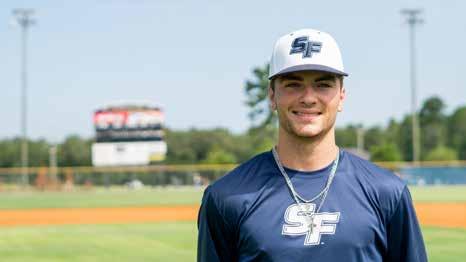
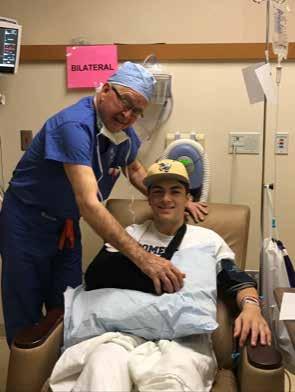
— Nick Herndon


— Nick Herndon
Andrews performed Tommy John surgery on Herndon on March 29, 2018. It is formally known as Ulnar Collateral Liga- ment Transplant surgery and is nick-named af- ter Dodgers left-hand- ed pitching ace Tommy John, who was the first athlete to undergo the then-unknown proce- dure. The surgery consists of transplanting a tendon from the patient's forearm or leg and using it to re- place the damaged UCL in the patient's elbow. An- drews is known today as the expert at performing the procedure.
Herndon began re- hab within a week of the surgery. He worked with therapist Chris Jarrett at Thomasville Physical Ther- apy, following a regiment set forth by Andrews.
“Chris and I would call Dr. Andrews periodically and update him on my progress,” Herndon said.
The physical thera- py lasted nine months. Herndon remembers the first time he picked up a baseball and was cleared to throw again.
“It was really, really weird,” he said.
Slowly but surely, Herndon regained his strength and confidence, and he was in the starting lineup, playing center- field and batting second in TCC’s first game of his senior season. The num- ber of throws he could make from the outfield was limited, and he had a pitch limit of 35 pitches. (He didn’t return to the mound until the end of the season).
Herndon picked right up where he left off: He finished his senior season with a .514 batting aver- age and .886 slugging percentage. He was also named the Region Player of the Year.
Herndon is now the starting center-fielder for Santa Fe College in Gainesville, Florida. He played 22 games for Santa Fe before their sea- son was cut short due to COVID-19. In the short season, he finished with a .356 batting average, two home runs, and 18 RBIs.
During a one-week stretch of the season, Herndon batted .545 (18- 33) with 11 runs scored, four doubles, one triple, one home run, and 10 RBIs. For his standout performance in just eight games, he was selected as the FCSAA State Play- er of the Week. Because of the shortened season, he will be ruled a fresh- man for the 2021 season.
Despite his great success, Herndon un- derstands that his injury could have easily ended his baseball career, and he is grateful for getting another opportunity.
“My set back with Tommy John surgery wasn’t easy, but it made me a better per- son and a better ball player," Herndon said. "This game will put you through highs and lows, but through it all I’m thankful that God was, and still is, with me every step. I’m blessed to have par- ents who love me and support me and my love for baseball.”


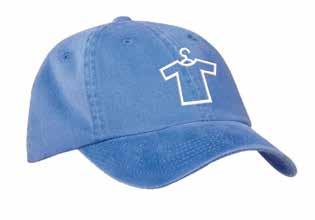

Taking Care of Mental Health in a Pandemic
Written by: Steph Coelho
Taking care of mental health is essential at any time. But during a pandemic, people may face additional challenges that make it difficult to address mental health concerns.
As COVID-19 continues to spread throughout North America, people with and without existing mental health conditions may feel overwhelmed and anxious. Both children and adults may find themselves feeling nervous or fearful of getting sick.
While it’s vitally important for people to follow health guidelines, like those outlined by the CDC, it’s also crucial that people pay attention to their mental health during these difficult times.
People may have a multitude of reactions and experiences to and as a result of the pandemic. COVID-19 has also affected the population as a whole by increasing known risk factors for mental health issues, including:
• Unpredictability • Uncertainty • Social isolation as a result of lockdown and social distancing • Financial stress • Inactivity • Decreased social support
As the economy has taken a hit, so has mental health — even in people who did not previously have mental health issues.
According to a recent study on COVID-related mental health issues published in The Lancet, evidence shows a marked increase in depression, anxiety, and stress in the general population due to the pandemic.
The study notes that young people are notably at risk for mental health issues at this time, citing an increase in calls to helplines for help with anxiety.
People with existing mental illness are also greatly affected by the pandemic. There’s some evidence that people with existing psychological issues may be at a higher risk for contracting the virus. The onset of the pandemic has also reduced access to medical care and support services.
People who are at higher risk for mental health issues during a crisis, like a pandemic, include:
• People who are at high-risk for COVID-19 complications • Young people • Caregivers • Frontline and essential workers • People with existing mental health issues • People with substance abuse issues • People who have faced employment changes like loss of a job or reduced income • Socially isolated people • People with disabilities • Racial and ethnic minority groups • Homeless individuals
Unfortunately, while the population’s mental health has been widely affected by the pandemic, the already under-equipped mental health system is struggling to handle the current mental health crisis. It is currently unable to meet the rising mental health needs of society during a pandemic.
Some people may experience mental health issues for the first time during the pandemic. For most, anxiety and other worries will dissipate as the situation eventually comes to an end. However, for others, these mental health issues may stick around.
Trends We Can Expect to See in the Future
The pandemic’s mental health challenges have made clear the importance of accessible mental health services and support. They have also clearly demonstrated the many weak spots in the system.
We will likely see a continued increase in remote mental health services long after the pandemic has ended. We may also see changes in how telehealth services are rendered and reimbursed.
We may observe new, emerging approaches to providing mental health services. We will also likely see a continued upward trend in mental health issues, particularly as a result of the situation's impact on the economy. People will experience mental health ripple effects as they face economic hardships.
There may also be a lingering, collective obsession with hygiene.
Suppose the current mental health crisis is not addressed. In that case, the country can expect the number of people affected by mental health disorders to increase down the road.
Changes We’ve Already Seen
Increases in telehealth services is a significant change brought on by the pandemic. While telehealth was already around, the pandemic prompted a boom in this industry.
Remote healthcare services, including mental health services, allows for increased access. Still, this type of remote care is not appropriate for everyone. Not everyone is technologically savvy or able to access a computer with an internet connection. Digital therapy, like in-person therapy, may also not be financially within reach for some people.
The future mental health of citizens post-pandemic is reliant on ensuring services and support are accessible and available to all.
6 Ways to Take Care of Your Mental Health During the Coronavirus Outbreak
1Limit Your Coronavirus News Intake
2Find Healthy Coping Mechanisms
3Find a Way to Vent Your Feelings
4Keep a Healthy Lifestyle
5Get the Facts: Be Prepared, But Realistic
6Remember Your Strengths
7 Ways to Boost Your Mental Health
1Develop a Morning Routine
2Start Gratitude Journaling
3Avoid Procrastination
4Cut Digital Time and Read a Book
5Create Something
6Practice Mindfulness
7Set a Night Routine




